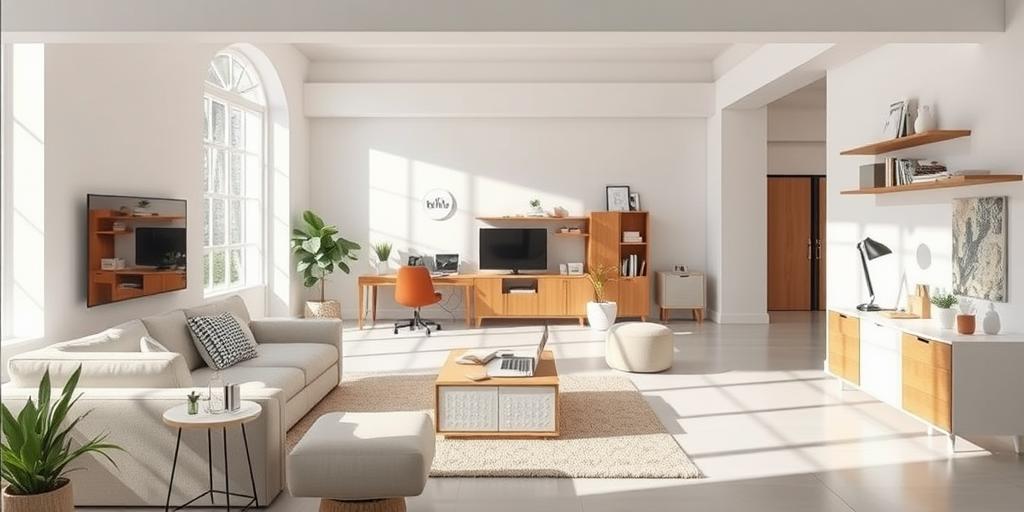The home design landscape is rapidly evolving, and by 2025, the concept of multifunctional spaces will be central to modern living. This post explores how homes are adapting to meet the demands of work, leisure, and family life, all within the same footprint.
The Rise of Multifunctional Design
Multifunctional design focuses on creating spaces that can serve multiple purposes. This approach is driven by several factors:
- Urbanization: As cities grow, living spaces shrink, necessitating efficient use of every square foot.
- Remote Work: The shift towards remote work has blurred the lines between home and office.
- Sustainability: Smaller, more efficient homes reduce environmental impact.
Key Elements of Multifunctional Spaces
- Adaptable Furniture:
- Modular Sofas: Easily reconfigured to create different seating arrangements.
- Convertible Tables: Dining tables that transform into desks or coffee tables.
- Storage Solutions: Hidden storage compartments in furniture to maximize space.
- Flexible Room Layouts:
- Open-Concept Designs: Combining living, dining, and kitchen areas for a sense of spaciousness.
- Partitioning Systems: Movable walls or screens to divide spaces as needed.
- Loft Conversions: Utilizing vertical space to create additional living areas.
- Smart Technology Integration:
- Automated Lighting: Adjusting lighting to suit different activities.
- Smart Home Systems: Controlling temperature, security, and entertainment from a single device.
- Integrated Entertainment Centers: Media units that blend seamlessly into the living space.
Examples of Multifunctional Spaces in 2025
- The Home Office/Guest Room: A spare room equipped with a Murphy bed that can be easily converted into a workspace during the day.
- The Kitchen/Entertainment Hub: A kitchen island with built-in seating and a pop-up television, perfect for cooking and socializing.
- The Living Room/Home Gym: A living area with foldable exercise equipment and a wall-mounted screen for virtual fitness classes.
Benefits of Multifunctional Home Design
- Space Optimization: Making the most of limited square footage.
- Increased Flexibility: Adapting to changing needs and lifestyles.
- Enhanced Comfort: Creating personalized environments that cater to various activities.
- Cost Savings: Reducing the need for larger homes or additional rooms.
Conclusion
The future of home design is undoubtedly multifunctional. By embracing adaptable furniture, flexible layouts, and smart technology, homeowners can create spaces that are both efficient and enjoyable. As we move closer to 2025, expect to see even more innovative solutions that redefine the way we live and interact with our homes.
